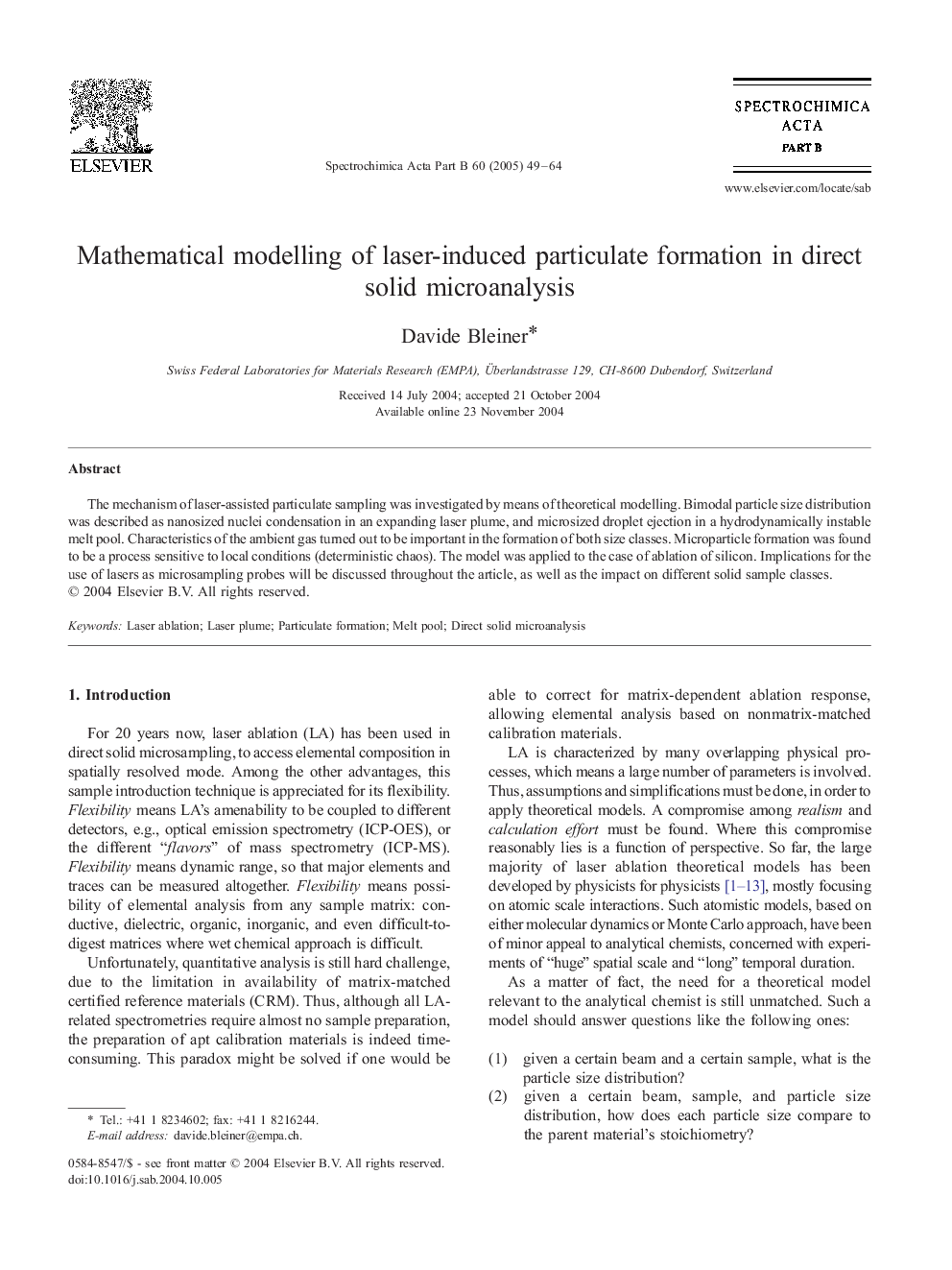| Article ID | Journal | Published Year | Pages | File Type |
|---|---|---|---|---|
| 10558591 | Spectrochimica Acta Part B: Atomic Spectroscopy | 2005 | 16 Pages |
Abstract
The mechanism of laser-assisted particulate sampling was investigated by means of theoretical modelling. Bimodal particle size distribution was described as nanosized nuclei condensation in an expanding laser plume, and microsized droplet ejection in a hydrodynamically instable melt pool. Characteristics of the ambient gas turned out to be important in the formation of both size classes. Microparticle formation was found to be a process sensitive to local conditions (deterministic chaos). The model was applied to the case of ablation of silicon. Implications for the use of lasers as microsampling probes will be discussed throughout the article, as well as the impact on different solid sample classes.
Related Topics
Physical Sciences and Engineering
Chemistry
Analytical Chemistry
Authors
Davide Bleiner,
